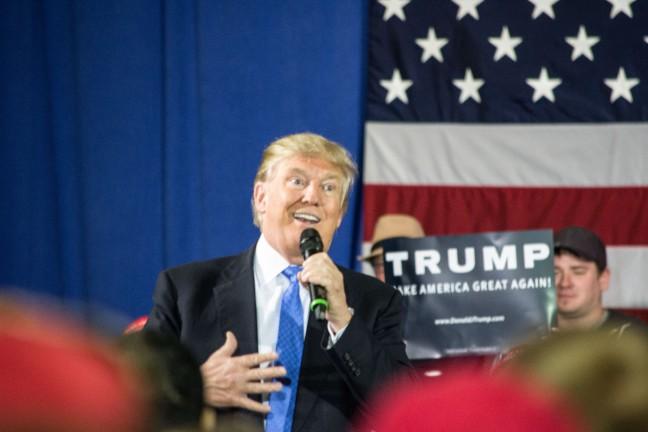Trump has recently rustled many feathers in Washington, D.C., and around the world, with his decision to implement strict tariffs on the importation of aluminum and steel. He’s even shown signs of wanting to push further, preparing tariffs against China’s technology and telecommunications industries.
These decisions fall directly in line with his campaign slogan of “America First.” The pledge itself is ironic given Trump’s affinity for international cheap labor during his business career. But at the end of the day, he was an opportunistic businessman and it’s hard to hate him for that.
Wisconsin Republicans criticize Trump’s plans for tariffs, citing price increases, trade tension
It’s easier to whole-heartedly despise his habit of playing on working-class fears to rise to power. These tariffs are at best a belated concession to his base, and at worst they are a short-sighted economic policy that could cost the world economy $470 billion.
These tariffs are a symptom of the larger socio-economic issue that has been plaguing America for years now — the demise of the blue-collar worker. Look to any number of statistics for evidence of this. The Center for Economic and Policy Research has done extensive work, suggesting workers of manufacturing — whose industry will be sorely weakened by Trump’s trade war — are already hurting enough.
Those who work construction jobs still have not recovered from the burst of the housing bubble. States with a higher percentage of blue collar workers have seen slower job growth since 2000. Even though that’s only a sliver of the findings, the takeaway is clear: Labor jobs are slowly going extinct in the states.
Trump has attempted to revitalize these industries, which make up much of his voter base, with extremely controversial policies. The most obvious example is coal mining. Though Trump loves to talk about “clean, beautiful coal,” the energy source’s role in global warming has been the death of the industry.
While many point to China’s larger use of coal as a reason for America to battle for these jobs, this misses the bigger point — the future of energy isn’t in coal, it’s in green energy sources like solar and wind. Trump is fighting to send us back in time, and the repercussions will put as at a disadvantage in the global stage.
The decline in the American manufacturing industry is more complex, with two factors — outsourcing and automation — playing competing roles. Unfortunately, the recent tariffs and the overall larger trend of decisions aimed at a trade war with China will most likely not be enough to save American manufacturing. A 2015 study from Ball State University found productivity growth is responsible for nearly 88 percent of job losses in manufacturing.
Report finds advanced energy sector boasts ‘greatest market opportunity of the era’ for Wisconsin
The threat of automation, coupled with a trade war Trump’s tariffs will likely cause is more than this nation can handle in such a volatile political climate. A singular solution to America’s trade and industry woes may not be clear, but short-term fixes that transport our country’s economy into the past are certainly not the solution.
Eric Hilkert ([email protected]) is a junior majoring in finance.














